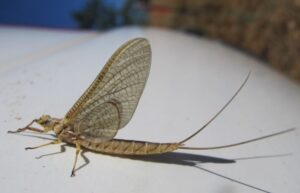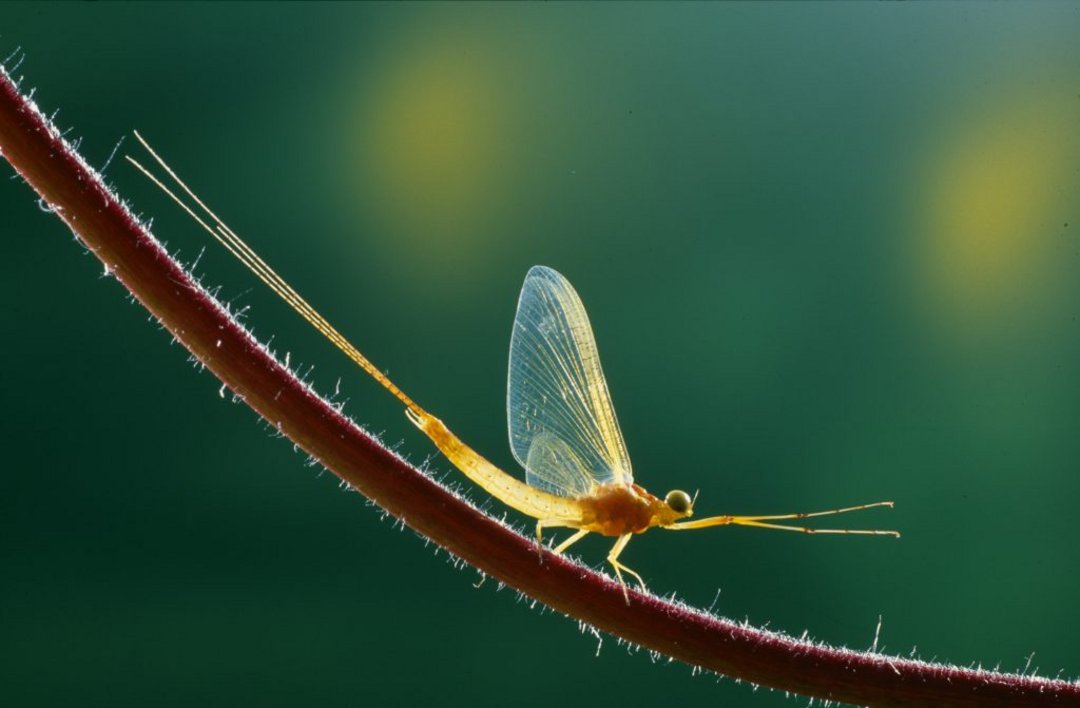Clearing Up the Confusion
If you’ve spent any time on the water, you’ve likely heard the terms “Mayfly,” “BWO,” and “PMD” thrown around. These terms are common in the fly fishing world, but they can sometimes be used interchangeably, which can lead to a bit of confusion. Let’s break down what each of these terms means and how they differ, so you can be better prepared the next time you hit the river.
What is a Mayfly?
Mayflies are a diverse group of insects belonging to the order Ephemeroptera. They are one of the most important food sources for trout and are a staple in any fly angler’s lexicon. Mayflies go through several life stages: egg, nymph, emerger, dun (subimago), and spinner (imago).

Key Characteristics:
- Delicate Bodies: Mayflies have slender bodies and are often translucent.
- Wings: Their wings are upright and somewhat triangular, resembling a sail.
- Tails: They have two or three long, thread-like tails.
- Hatch Seasons: Mayflies can hatch throughout the year, but many species are most prolific in the spring and fall.
Popular Fly Patterns:
- Adams: A versatile dry fly that can imitate many mayfly species.
- Comparadun: Known for its upright wings and realistic profile.
- Copper John: A weighted nymph pattern that can mimic mayfly nymphs.
What is a BWO (Blue-Winged Olive)?
The term “BWO” stands for Blue-Winged Olive, and it refers to a specific type of mayfly belonging to the Baetidae family. BWOs are small mayflies, typically olive or grayish in color, with bluish-tinged wings. They are incredibly common and are an important food source for trout, especially in cooler months.

Key Characteristics:
- Size: BWOs are small, usually ranging from size 16 to 24.
- Color: They have olive or grayish bodies with blue-gray wings.
- Hatch Seasons: BWOs hatch throughout the year but are most prevalent in spring and fall, often during overcast, drizzly weather.
Popular Fly Patterns:
- Blue-Winged Olive Dry Fly: Imitates the adult stage during a hatch.
- BWO Emerger: Mimics the transitional stage between nymph and adult.
- BWO Nymph: Represents the nymphal stage, great for subsurface fishing.
What is a PMD (Pale Morning Dun)?
PMD stands for Pale Morning Dun, another type of mayfly, but from the Heptageniidae family. PMDs are medium-sized mayflies known for their pale yellow to light olive coloration. They are especially prolific in the summer months and are a favorite target for trout.

Key Characteristics:
- Size: PMDs are typically larger than BWOs, ranging from size 14 to 18.
- Color: They have pale yellow to light olive bodies with lighter-colored wings.
- Hatch Seasons: PMDs are most commonly found in late spring to early fall, often in the mornings and late afternoons.
Popular Fly Patterns:
- Pale Morning Dun Dry Fly: Imitates the adult dun stage.
- PMD Emerger: Represents the emerging insect as it transitions from nymph to adult.
- PMD Nymph: Mimics the nymphal stage, effective for subsurface fishing.
Clearing Up the Confusion
While BWOs and PMDs are both types of mayflies, they represent different species with distinct characteristics and hatch times. Here’s a quick summary to help clear up any confusion:
- Mayfly: A general term for insects in the order Ephemeroptera, covering a wide range of species and sizes.
- BWO (Blue-Winged Olive): A specific type of small mayfly in the Baetidae family, with olive bodies and blue-gray wings, prevalent in cool weather.
- PMD (Pale Morning Dun): A type of medium-sized mayfly in the Heptageniidae family, with pale yellow to light olive bodies, prevalent in warm weather.
Knowing these differences can help you better match the hatch and select the right fly pattern for the conditions you’re fishing. So, the next time someone mentions BWOs or PMDs, you’ll be ready to hit the water with confidence and the right flies in your box.


2 responses to “The Difference Between a Mayfly, BWO, and PMD”
Thanks for this. It helped me understand what the basic differences are between those hatches. Great app by the way!
Thanks for the message! If you want a sticker, please email us with your mailing address.